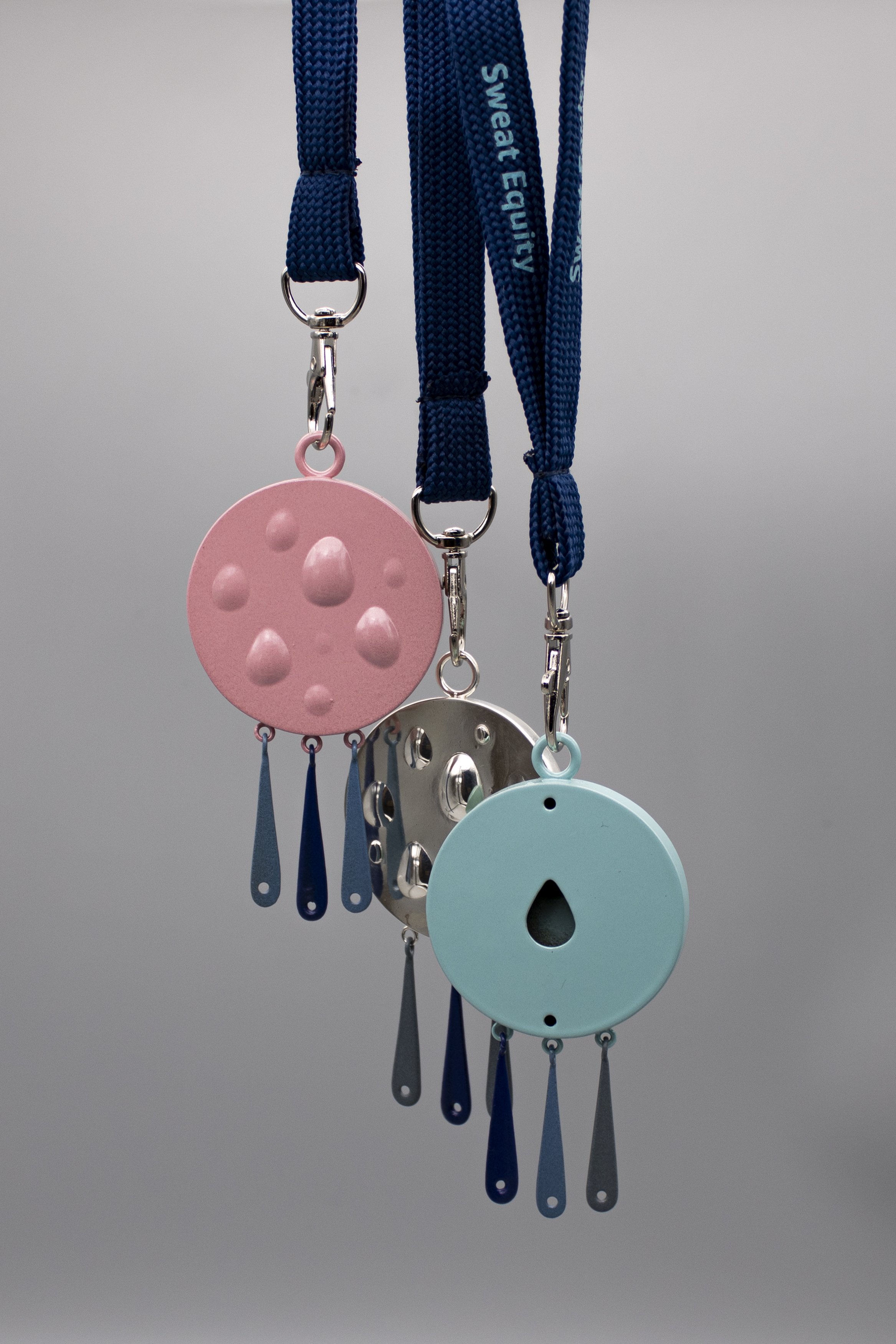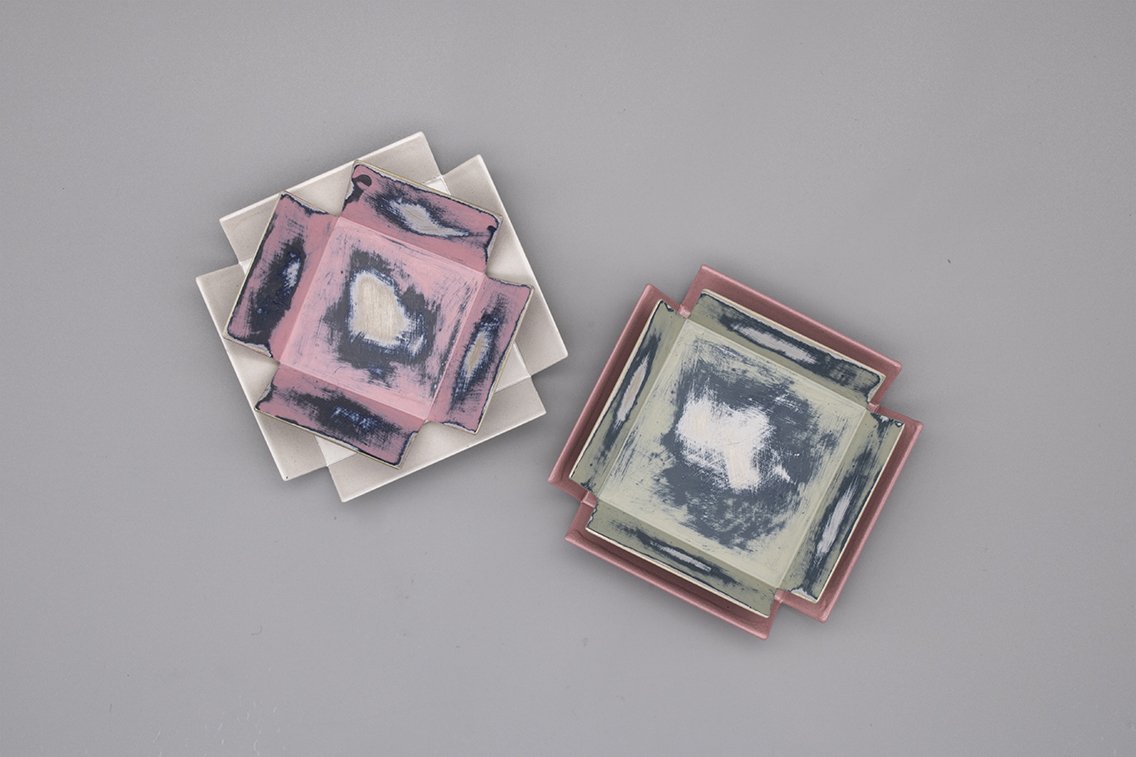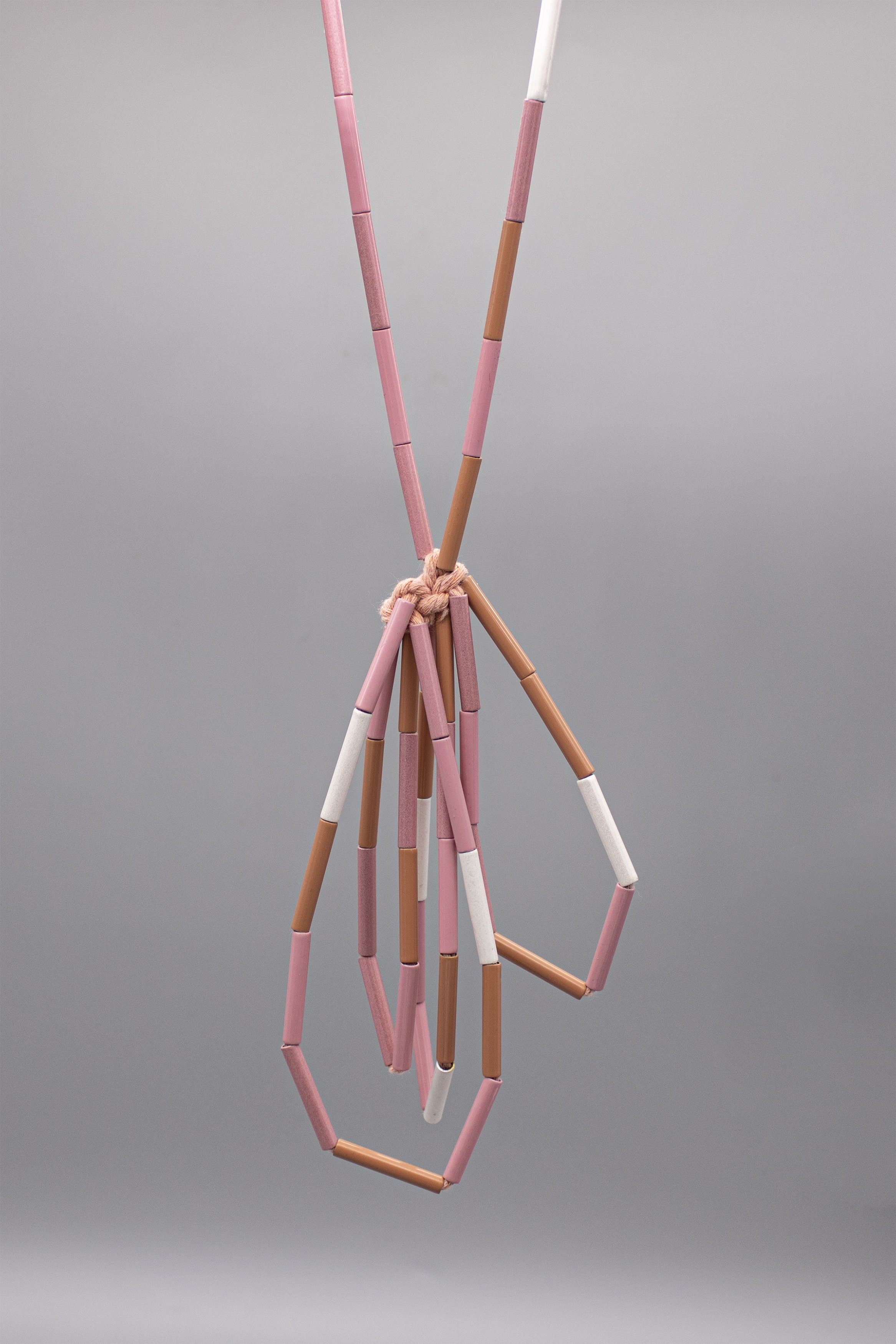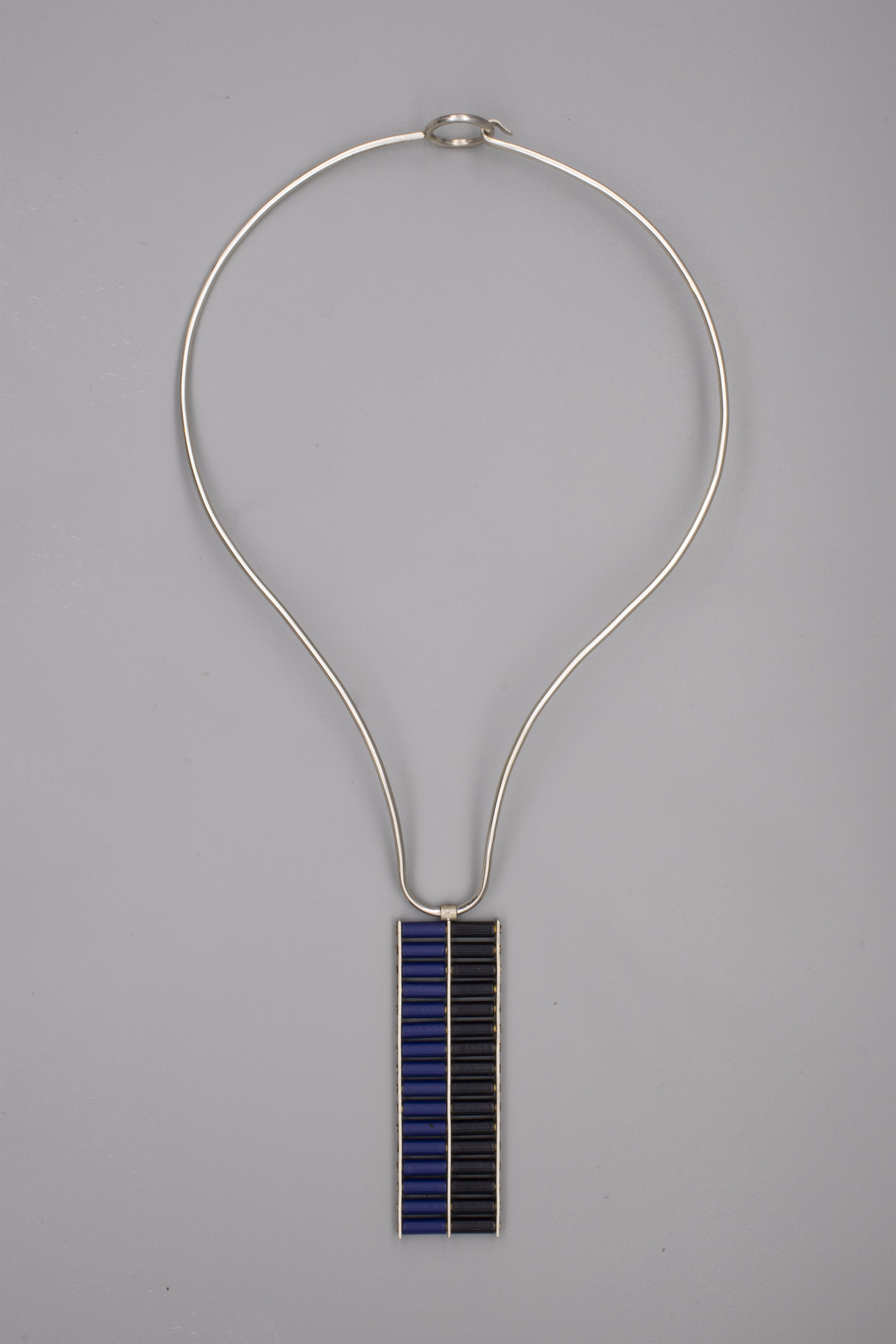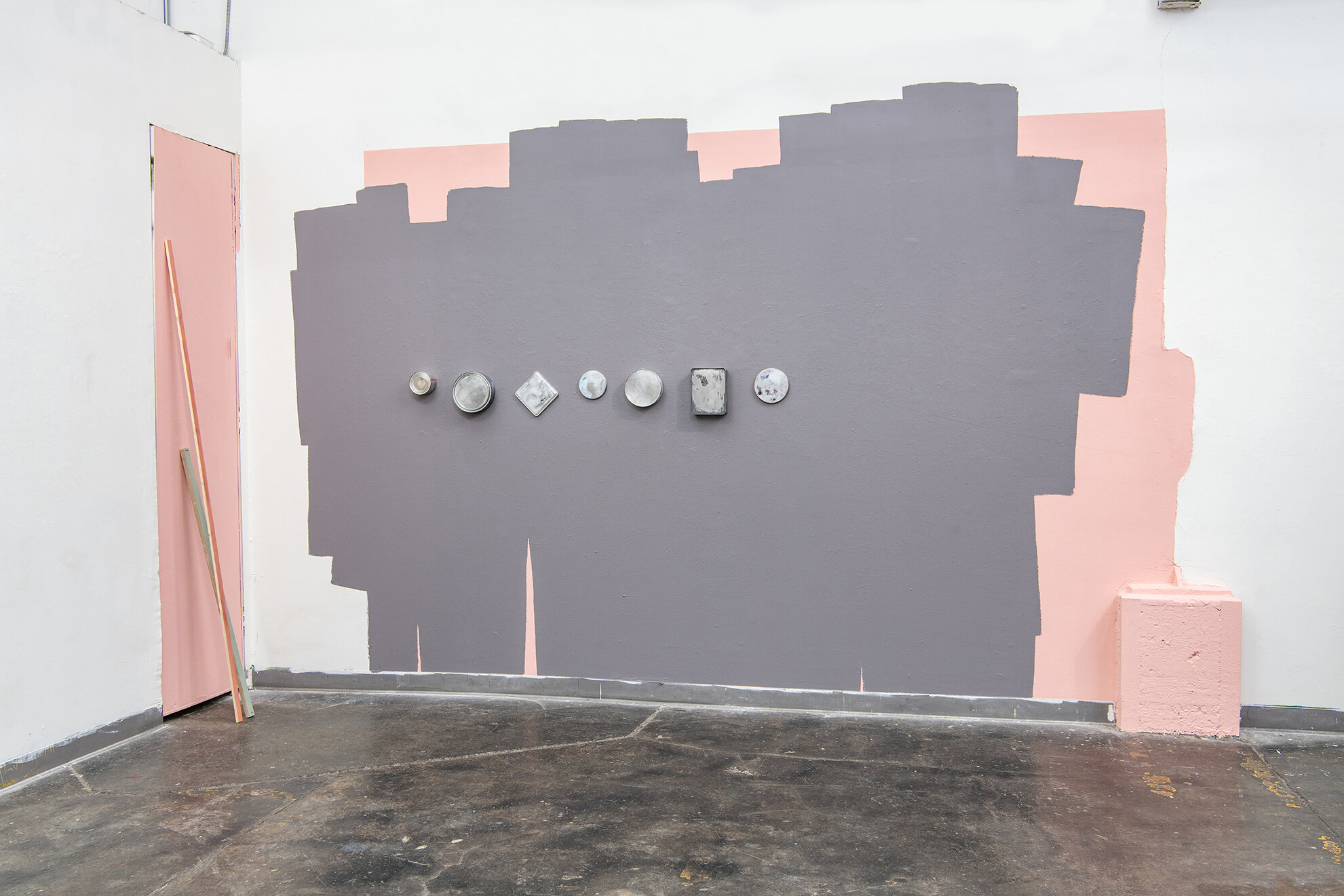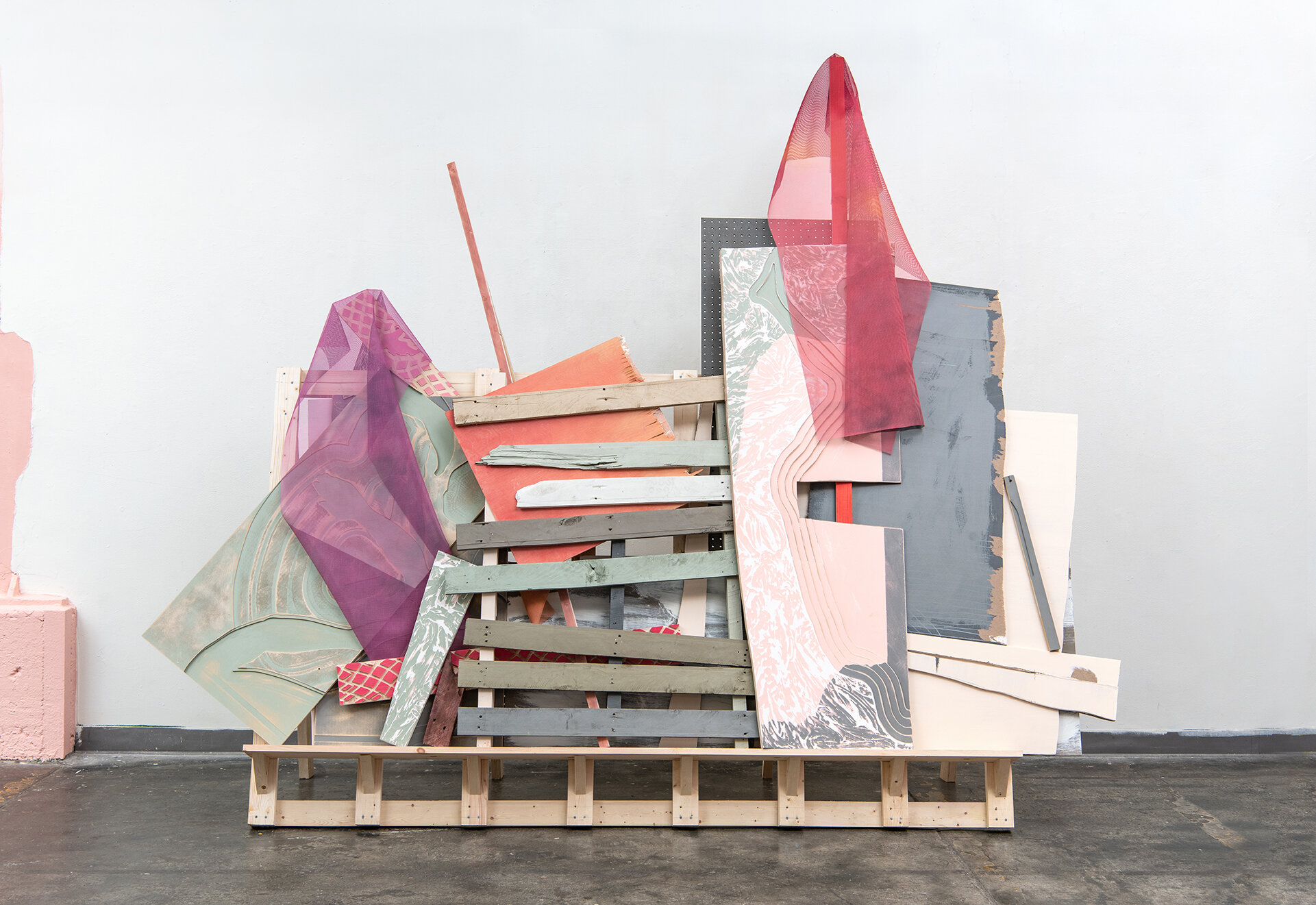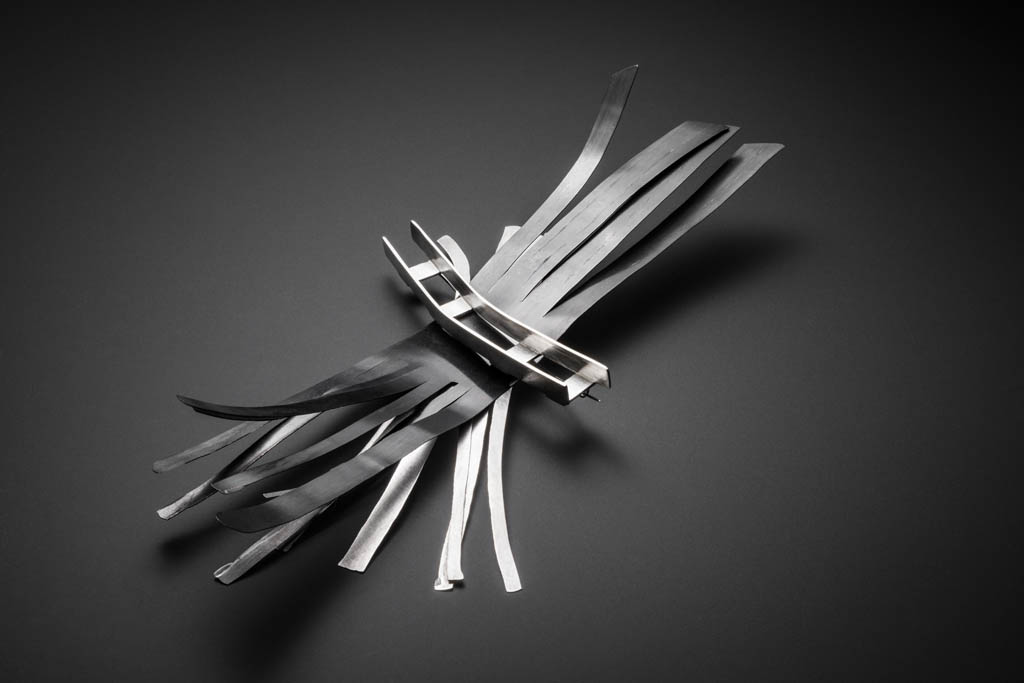Fulfillment
Fulfillment was an exhibition of jewelry and speculative objects I created for an exhibition at the Baltimore Jewelry Center Gallery as part of my 2020-23 Teaching Fellowship at the Center. During the Fellowship, I reflected on my work life in the United States. In addition to being a jewelry and metals instructor, it has also included labor and production roles unrelated to my training; day jobs I took on to support my work as an artist. The experience of teaching a craft and sharing a passion sits in stark contrast to the extreme physical output demanded of American manufacturing and logistics. Fulfillment wove the influence of these experiences together in an attempt to exorcize the difficult and meditate on the meaningful. The exhibition included [surround] sound designed by my partner and Baltimore-based composer, Jason Charney.
Exhibition text
Since relocating to the US in 2016 I’ve been thinking a lot about labor. My first job in the US was in an Alabama warehouse, mixing ink and printing t-shirts. While far removed from my creative practice, it provided some of the financial support I needed and helped me find my bearings in a new country. I eventually found my way back to making, as I connected with creative communities and replaced semi-skilled labor with graduate study (the similarities of the two surprised me). When the pandemic hit, my graduate studies were brought to an abrupt halt and I went into unskilled labor, this time in a shipping facility, disturbingly named a fulfillment center. My time in this field was short lived, a brief 3 months, as I soon accepted a position as Teaching Fellow at the Baltimore Jewelry Center, which also gave me the opportunity to create the exhibition in front of you now.
The word fulfillment sits so uncomfortably on my mind when I think about it in terms of product and labor. Most of my employment in the US has been grossly underpaid, based primarily on minimum wage standards and a negligent attitude towards mental and social wellbeing in American work culture and legislation. The cause for this is with institutions and ideals that are above and beyond the individuals I’ve worked (and commiserated) with. Through these jobs I’ve also experienced the use of digital technology to further dehumanize work life, with emailing, barcoding and biometric scanning, replacing direct (verbal, social) communication in the workplace. The imperative for this culture is reportedly economic growth. This can be a very seductive argument and is one that likely creates tension for most of us. Fulfillment is not a word that comes to mind.
When people ask me what my favorite tool is (a popular question for makers to ask each other), I now say my hands. I have come to identify strongly with the ability humans have to think with their hands. Aside from the obvious uses of the hand in jewelry making, I have found enjoyment in all of my work through the use of my hands and body. Through them, I problem make and problem solve. I lose time in the rhythms and repetition of the task at hand. I repeat, practice and perfect. This is true in the warehouse, the classroom and the studio. Fulfillment finds a place through it.
Text from collaborator, Jason Charney
Physical labor and music have always been companions. We naturally subdivide time into regular, rhythmic units to maintain focus and consistency, or to sonically coordinate action with a larger group. All the sounds in Fulfillment are generated from recordings of Andy’s laborious metalsmithing processes: heating with a gas torch, forming with a hammer, or polishing with a brush, for example. Thickly layered and stretched or compressed in time and pitch, these sources are often unrecognizable, but reflect the diverse sonic experiences and alchemic labor of a jewelry studio.
Constant, precarious, living tension
Constant, precarious, living tension, was the title of my installation at Artspace, Richmond, VA in the exhibition, Because Of, in May 2019. This exhibition was held as the requirement for Candidacy in the MFA program of Virginia Commonwealth University’s Craft/Material Studies department, in which I was a first year graduate student at the time. My fellow craft graduate student peers were Eric Anthony Berdis, Laura Boban, Min Haeng Kang, Paige Lisbeth Morris and Samuel Monroe Brown. Candidacy is held at the end of a VCU MFA students first year, presents their work and research and determines their eligibility for candidacy leading into their second and final year of study.
As the culminating presentation of my first year of graduate study, this work expressed my long-held attitude to making as a process oriented undertaking, involving craftsmanship, intuition and logic. Treating the exhibition space like a body, I used materials and objects from the studio to arrange and adorn. I was thinking about the nature of jewelry to act as a mutable, corporeal embellishment that marks and reflects our own physical, emotional and ideological changes. Like the outer layers we cover our own bodies with, this work was part planning and preparation and part improvisation and reaction.
Use
Use, is a juried exhibition by the members of the Jewellers and Metalsmiths Group of Australia (Queensland Chapter) Inc. Thematically focused on tools and processes, Use explores the conceptual breadth and layers of meaning that operate within this theme for contemporary jewellery practitioners and metalsmiths. At the heart of any artisan's practice, tools and processes provide an interesting and reflexive subject matter and point of entry into contemporary jewellery and small objects practices. Curated by Lisa Bryan-Brown, Use will be on tour throughout Australia from 2018-2021.
More information about the exhibition and its tour schedule can be found on the JMGQ website in the Gallery section HERE.
A statement about the work I produced for the exhibition:
As a maker, the value I place on my hands is incalculable. I think about this after a long session in the studio, when they ache from extended use. This pain reminds me of their limits and thus the impossibility of my body functioning forever. My aunt, a pattern maker by trade, has recently been dealing with Dupuytren’s contracture, a genetic condition that has been accelerated by years of repetitive manual labour, resulting in a hardening deformation of her hands. Without medical intervention, the limit of her labouring hands has been reached. She now uses their deformity to warn me against relaxed attitudes toward self-care, as though illustrating a cautionary fable with their immovable contortions.
While making these brooches I was thinking about the transformation of the personal into the public in an object as intimate as a jewel. In them, allusions to the hand that works, the eye that sees and the heart that feels were employed to create my own set of useful objects. They were made with both my aunt and I in mind, as objects that might be sympathetic to an experience, as in the case of my aunt, or to a fear, as in my own. People have long used objects for similar purposes; ones that are seemingly decorative and without use, but are in fact designed to carry the weight of our passions, fears, superstitions and wisdom and anchor our memory and experience in the physical world. A private thought shared proudly as a jewel on the adorned body seeks connection and community through acts of interpretation and attraction. No two people will perceive an object in the exact same way and it will come to represent a multiplicity of thought and experience.
Grasses
Working with finely rolled silver, impressed with grassy debris from a storm waterway close to a previous home, these pieces were an early exploration of landscapes embodying the natural and the man-made. The brooch, Dross, was selected for inclusion in Contemporary Wearables 2015, an Australian contemporary jewellery biennial exhibition.










